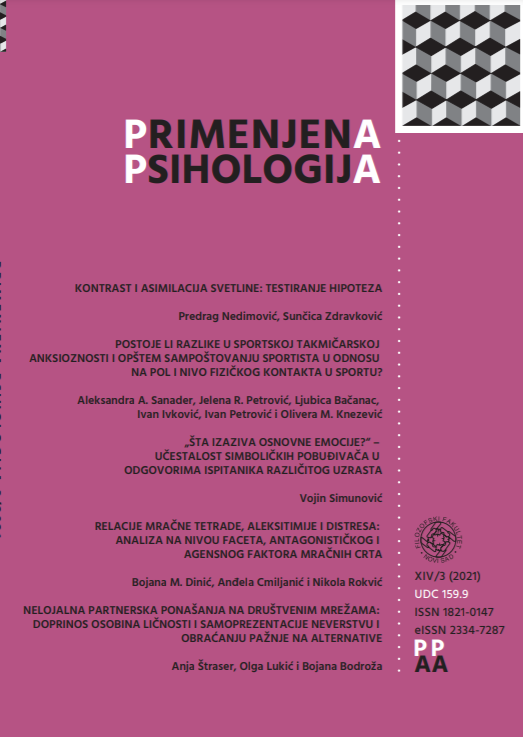Disloyal partner behaviors on social networks: Contribution of personality traits and self-presentation to infidelity and attentiveness to alternatives
DOI:
https://doi.org/10.19090/pp.2021.3.365-391Keywords:
intimate relationships, infidelity, attentiveness to alternatives, narcissism, sensation seeking, social networksAbstract
Social networks have become the context in which many intimate relationships are established and developed, but they can also facilitate different kinds of disloyal behaviors in intimate relationships. We focused on two kinds of such behaviors – attentiveness to alternatives and infidelity on social networks and examined the contribution of narcissism, sensation seeking and self-presentation on social networks to these behaviors. Additionally, we tested if the relationship between personality traits and infidelity was mediated by self-presentation and attentiveness to alternatives. The study sample included 423 individuals who were currently engaged in a romantic relationship (22.2% male, mean age 22, age range 18 to 52). The results showed that narcissism, sensation seeking, and self-presentation on social networks all gave unique contributions to the prediction of attentiveness to alternatives, while infidelity was uniquely predicted only by self-presentation. The relationship between narcissism and infidelity was fully mediated by self-presentation and attentiveness to alternatives, while the relationship between sensation seeking and infidelity was mediated only by attentiveness to alternatives. The results suggest that it is justified to make a conceptual difference between attentiveness to alternatives and infidelity. The two forms of disloyal partner behaviors could be motivated by somewhat different psychological needs.
Metrics
Downloads
Published
How to Cite
Issue
Section
License
Copyright (c) 2021 Anja Štraser, Olga Lukić, Bojana Bodroža

This work is licensed under a Creative Commons Attribution 4.0 International License.







